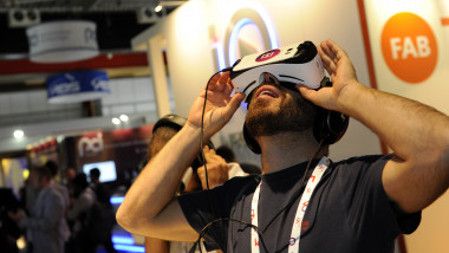Virtual Reality Market Ready for Comeback, Report Predicts
After a down 2020, shipments and revenues are expected to pick back up

BOSTON—Strategy Analytics expects the global virtual reality and augmented reality markets to pick back up in 2021 after a down year in 2020 because of COVID-19.
The projections come from Strategy Analytics’ report, “Short and Long Term Impacts of COVID-19 on the AR and VR Market.”
Among the key findings from the report are that the forecasted combined shipments of VR headsets and AR dedicated headsets is on pace to increase sixfold through 2025. XR hardware (the identification for this combined group) revenues are projected to surpass $28 billion annually in 2025.
Vendors like Samsung and start-up Nreal are also expected to commercialize lightweight, consumer-friendly AR headsets that are tethered to smartphones, which Strategy Analytics says will drive growth in mid and low tier markets. Also in the lower end of the market, 2021-2022 should see a comeback of smartphone-tethered headsets as a result of mobile operators launching 5G.
Though Strategy Analytics has increased its overall forecast for VR headsets, it has decreased its anticipated shipments of console-tethered VR; this is based on Microsoft’s decision not to support VR in the next-generation Xbox.
“We have raised our longer term forecast for XR hardware as a result of new work and life patterns in the ‘new normal,’” said David MacQueen, director of virtual and augmented reality service at Strategy Analytics. “Work at home, training, education and collaboration will all benefit from AR/VR.”
Strategy Analytics’ Vice President David Kerr also says the audience for these devices has expanded beyond gamers and into fields like engineering, automotive and architecture.
The professional video industry's #1 source for news, trends and product and tech information. Sign up below.
A full summary of the report is available on Strategy Analytics’ website.
